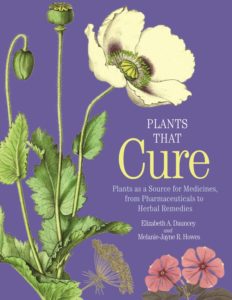 It’s the age-old balance – pain and pleasure, sorrow and happiness, death and life; so many of the things of the world which bring about one are inextricably linked to the other, and even sometimes one and the same. For millennia, folk healers and herbalists, whose spheres of activity have developed, expanded, and diversified into those of physicians and pharmacists, while also still existing in modernized forms of traditional practice, as well as fields of more academic study such as ethnobotany, have sought for treatments and cures in the world of plants. And, in reference to the aforementioned balance, some of the plants so used, when prepared or employed differently, hold the power to take as well as preserve life.
It’s the age-old balance – pain and pleasure, sorrow and happiness, death and life; so many of the things of the world which bring about one are inextricably linked to the other, and even sometimes one and the same. For millennia, folk healers and herbalists, whose spheres of activity have developed, expanded, and diversified into those of physicians and pharmacists, while also still existing in modernized forms of traditional practice, as well as fields of more academic study such as ethnobotany, have sought for treatments and cures in the world of plants. And, in reference to the aforementioned balance, some of the plants so used, when prepared or employed differently, hold the power to take as well as preserve life.
In 2018, Princeton University Press published Dr. Elizabeth A. Dauncey‘s and Dr. Sonny Larsson’s Plants That Kill: A Natural History of the World’s Most Poisonous Plants. Taking up such plants as deadly nightshade, hemlock, and wolfsbane, as well as a number of others and examining their effects on humans as well as other creatures, it was hailed as “a must for experts and armchair botanists alike.”
 Now, Dr. Dauncey returns, this time in partnership with Dr. Melanie-Jayne R. Howes, to maintain the balance with the publication of Plants That Cure: Plants as a Source for Medicines, from Pharmaceuticals to Herbal Remedies. Focusing on the healing properties of assorted species, this new work examines how a wide range of plants have been and are still being used – in both their original forms as well as through derived modern pharmaceutical medicines – to treat a multiplicity of conditions and diseases, “including heart and circulatory problems, fatigue and dementia, nausea and indigestion, respiratory infections, arthritis and joint movement, eye conditions, reproductive issues, and [even] types of cancer.”
Now, Dr. Dauncey returns, this time in partnership with Dr. Melanie-Jayne R. Howes, to maintain the balance with the publication of Plants That Cure: Plants as a Source for Medicines, from Pharmaceuticals to Herbal Remedies. Focusing on the healing properties of assorted species, this new work examines how a wide range of plants have been and are still being used – in both their original forms as well as through derived modern pharmaceutical medicines – to treat a multiplicity of conditions and diseases, “including heart and circulatory problems, fatigue and dementia, nausea and indigestion, respiratory infections, arthritis and joint movement, eye conditions, reproductive issues, and [even] types of cancer.”
Read independently, these works offer remarkable insights into some of the most fascinating biological effects of the world’s plants; read together, they provide the reader with a marvelous opportunity to acquire a truly mind-expanding understanding of just how integral plants are to our own lives as well as to the lives of so many other forms of life with which we share the planet.
If you enjoyed reading this, please consider signing up for The Well-read Naturalist's newsletter. You'll receive a helpful list of recently published reviews, short essays, and notes about books in your e-mail inbox once each fortnight.
